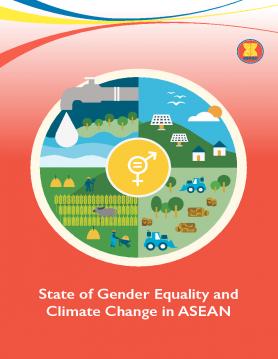You are here
Assessment Report on the State of Gender Equality and Climate Change in ASEAN
Overview/summary:
Southeast Asia is one of the most vulnerable regions to climate change, due to its geography. its high concentration of people and economic activities in coastal and other high-risk areas, and the key role of agriculture and other natural resource-dependent livelihoods, especially in rural communities. It also faces significant climate-related disaster risks, including cyclones, major floods, heat waves and droughts.
Climate change adaptation and mitigation are thus crucial for the region - sectors need to become more resilient, holistic disaster risk reduction (DRR) measures are critical, and with energy systems heavily relying on fossil fuels, the region also needs to decarbonze rapidly by scaling up renewable energy (RE). While there is potential for climate responses to support broad-based sustainable development and poverty reduction in the ASEAN countries, to do so, they need to be grounded in an understanding of how interescting forms of discrimination and inequality - based on gender, class, ethnicity, migration status, age, disability, and other factors - create differentiated vulnerabilities and limit people's ability to benefit from climate action.
To support the development of effective, equitable and inclusive policies, this study provides a gender-based analysis of climate change adaptation and mitigation in the ten countries in the Association of Southeast Asian Nations (ASEAN), with a focus on three sectors: RE, DRR, and agriculture. In addition to a regional overview, it provides a closer look at Cambodia, Indonesia, the Philippines, and Viet Nam, with detailed reviewes of relevant policies, and identifies best practices that could be emulated across the region.
Copyright © 2020 Grow Asia Terms of UsePrivacy PolicyContact Us

